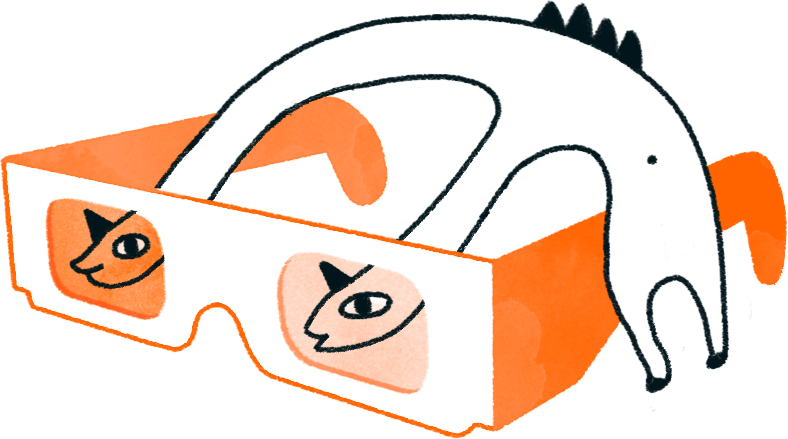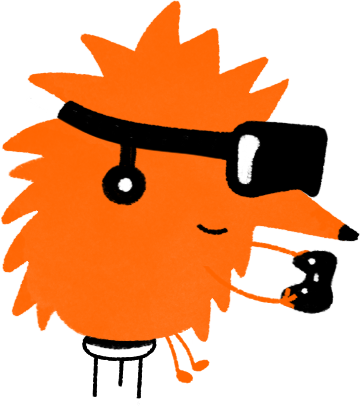So you’ve been hearing of Virtual Reality more and more recently. VR seems to be the current buzz word, with 2016 heralded as the year of VR. You’ve read some articles, but lots of terminology feels confusing and some of the messages seem to contradict one another.
Still, you are eager to learn more and try Virtual Reality for yourself.
Welcome.
In this series of articles I am going to walk you through some of the basic concepts related to VR. Whether your end goal is to kick back, relax, and simply enjoy some VR content, or to create your own experiences and share them with others – this guide will help you understand all the basics and develop the vocabulary needed to understand and discuss VR.
As always, feel free to browse through QubaXR.com for VR-themed articles covering more complex topics, tools, experiments, and content I’ve created or curated. If you have any feedback on this series or would like to suggest a topic for a future installment, feel free to drop a comment down below or shoot me an email.
Once again, welcome to the Absolute Beginner’s Guide to VR.
Let’s get started.
What does it all mean?
Virtual Reality is a fairly new topic in the public’s mind and not many conventions have been established yet. Different sources will understand and use the term in different ways, and there isn’t really one correct way of doing so.

To make matters more confusing, many content providers wanting to capitalize on the popularity of VR slap the label wherever they can, even if it’s completely meaningless – a situation similar to the overuse of phrases such as quantum (2002) or gluten-free (2014).
I too find myself applying the VR label in a particular way that simply feels right to me, but more on that later.
The standard classification
Listed below are various steps – from traditional TV/cinema to the completely immersive MxR (basically a holodeck). Each next step is more complex than the previous, as well as more immersive. You might have even experienced some of them already!

Traditional 2D Media (no tracking)
This is your ordinary, old-school content. Video, TV, cinema – presented on a flat surface or a device. The content lives within a defined frame that can only show you a part of the scene at any given time. The content author decides where to point the camera and what to focus on at any given time.

3D Media (no tracking)
Pretty much the same thing, but with the added illusion of depth. Common examples include 3D IMAX movies, or specially-labelled Blu-ray Discs that require you to wear a pair of light glasses – from the old red/cyan ones to the more current polarized or active shutter lenses.
Some devices like the Nintendo 3DS will allow you to observe depth without glasses, as long as you position your head in the right spot. 3D content can feel more immersive than traditional 2D, but the image is framed, and the director controls what you will be looking at.

Photospheres, Spherical 360° Video [Mono] (rotation tracking)
You probably first experienced this via Google Maps Street View. A 2D panorama of the scene is stretched on a sphere and the viewer can observe it from the center. On a computer you can use your mouse to rotate the view, while on mobile and HMD devices the gyroscopes translate your rotation and turn your device into a window/portal you can look through.
This is the most popular “VR” format these days due to a relatively low barrier to entry. Any modern mobile phone can capture and stitch together a Photosphere in just a couple of minutes. Dozens of 360° camera rigs are available off-the-shelf and you can watch years’ worth of content on YouTube’s #360video channel.

Stereoscopic 360° (rotation tracking)
The viewer is still located in a center, with the content projected around them. This time however, slightly offset images are projected on the spheres for each eye, creating an illusion of depth in the scene. You can look around a completely believable world, but not move around it. Simple interactions such as tapping and activating objects can be added to the experience.
To experience Stereoscopic 360° content, you need to use a special viewer or HMD (Head-Mounted Display). Thanks to the relatively low amount of real-time computation required, this type of experience is very popular on mobile platforms with budget viewers such as Google Cardboard or Samsung’s Gear VR. Content (photos, videos, animation, real-time) can be either downloaded and played locally or watched online.

Virtual Reality [Local] (rotation and limited position tracking)
In addition to observing the world, the user can now move around, although in limited capacity. The movement may range anywhere from how far you can lean in your chair, to walking within a space about as wide as two yoga mats put together. The content is rendered in real-time (typically using game engines) and requires relatively beefy hardware to push all the frames to the viewer.
Most of these experiences are now interactive, allowing you to navigate and manipulate the virtual world. Many of the experiences crafted for Oculus Rift (DK2 and higher) or PlayStation VR fall into this category and will most likely become the dominant form of VR for a while. Typical hardware requires a computer (to process the data), an HMD, a tracking camera, and often a controller.

Room-scale Virtual Reality (rotation and extended position tracking)
Currently lead by HTC Vive, this system allows you to experience all of the above (real-time, responsive, immersive, 3D, stereoscopic world) but with the added bonus of relatively extensive mobility. You can now stand up from your chair and freely walk around the space. The system will even warn you whenever you’re about to bump into your real world furniture.
In addition to the HMD, you are now also equipped with controllers in each hand, making the interaction much more intuitive, compared to standard input devices like mouse, keyboard or a gamepad.

Augmented Reality (rotation and position tracking)
While VR replaces the real world with a simulated one, AR augments the real world with additional information. This new layer of data is rendered on top of a see-through viewer. It does not need be a head-mounted stereoscopic viewer (although it as well may be). Augmented Reality may be as simple as face detection on your photo camera or as complex as a jet pilot’s HUD (Heads-up Display) displaying information directly onto the visor of the helmet.

Augmented Virtuality (multiple types of sensors)
It took me a while to decide whether to add AV to this list. Technically it is not a method of presenting content, but rather of capturing input. Still, just to have an academically complete list, I will give it a quick mention. If you think of Augmented Reality as adding digital data and objects to the real world, Augmented Virtuality does the opposite – it captures real world objects (and their behavior) to affect a digital world. Actions like tilting your phone to steer a car in a racing game or striking a pose in front of XBOX Kinect camera are examples of AV interaction.

Mixed Reality (real, augmented and virtual, all hand in hand)
This is the end-goal. The Star Trek Holodeck. The experience where the world surrounding you and another crafted by artists, engineers, UI and UX designers come together seamlessly. Currently the closest iteration in existence is Microsoft’s HoloLens. We still have a long way to go, but in the end we expect to have experiences where one can not only see and interact with digital objects in real world, but also feel them and use them to affect the real world and vice versa.
…but that’s still some years away.
Where does Virtual Reality begin
While most people agree on the above definitions of media types, not everyone agrees on which ones truly count as Virtual Reality. For some, to be considered VR, an element of interaction needs to be present. For others, the ability to move around a space is the essential definition of VR.
Many lean towards classifying VR based not on the content itself but the way it is consumed. Following this method, a photosphere observed on a computer monitor would not be considered VR, but the same photosphere viewed through, say, Google Cardboard, with all of your vision filled by the content, would be.
Personally, and I cannot stress this enough – this is simply my point of view – I have two requirements: Rotational tracking and stereoscopy. Having experienced monoscopic photospheres for many years, my eyes recognize their lack of depth, causing my brain to automatically reject the experience as not real. Give me some depth to the scene while letting me freely look around it and you got me – I feel present in the scene, even if I am looking at a still image.

Next time on Absolute Beginner’s Guide to VR
I hope you enjoyed this introductory chapter of my Absolute Beginner’s Guide to Virtual Reality. I know it was a lot of terminology at once, but it was necessary to establish a solid foundation we can build upon. If you found any parts of the chapter unclear, feel I’ve made a mistake, or simply want to strike up a conversation, feel free to leave a comment down below and I will do my best to get back to you soon.
In the next chapter, I’ll focus on consumer’s side of VR and discuss the different headsets either already available on the market or coming in 2016. Hopefully it may help you pick your first HMD. In later installments you can expect topics such as player apps, VR video hosting websites, authoring tools, camera rigs, compression, engines, practices and many more. Parallel to this series of articles, visit QubaXR.com for more advanced topics or follow me on Facebook and Twitter for updates, news, and an occasional look behind the scenes of my work-in-progress projects.
Credits
Written and compiled by Quba Michalski for QubaHQ/QubaXR
Edited by Greg Schram
Illustrations by ChiChiLand
![]()
Absolute Beginner’s Guide to VR by Quba Michalski is licensed under a Creative Commons Attribution-NonCommercial-ShareAlike 4.0 International License. Click the button above to learn more.